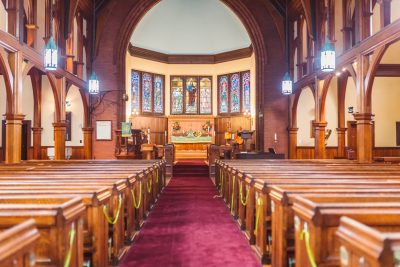Is your house of worship in need of church financing? Do you have an older facility in desperate need of repair or renovation? Or do you need money so you can expand to provide for a growing community? Perhaps you’ve experienced damage from water, fire, or earthquakes. Whatever the reason, the research for church financing options is best done before you need the money, instead of scrambling at the last minute.
Churches are deemed nonprofit organizations by default; however, many still find it beneficial to apply for 501(c)(3) nonprofit organization status with the IRS. Registration as 501(c)(3) allows the church to solicit outside funding without paying income taxes. As a 501(c)(3) nonprofit organization, income earned and church financing secured must support the church’s mission or charitable purpose.
501(c)(3) nonprofit organization, income earned and church financing secured must support the church’s mission or charitable purpose.
Perhaps your church has already secured church loan financing, but the terms are too costly. If you’ve decided it’s time to look for new church financing programs, such as a nonprofit line of credit, here’s what you need to know.
Summary
Ways to Get Church Financing
Government Grants
Time restraints are a significant factor in what kind of church financing your organization should seek. For example, suppose you’re looking for funding for a future project—say, six months to a year or more from now. In that case, you may be able to obtain church building financing or church equipment financing through grants specifically created for those purposes.
A church grant is an amount of money (usually predetermined) set aside for churches looking for money to support their religious organization’s project or purpose. For example, churches can apply for a grant to fund a building repair, add a new wing, grow a community garden, or for some other specific purpose. If the grant is awarded, the church never needs to pay back the money.
There are numerous existing nonprofit grants available as long as the church meets eligibility requirements. However, there is a lot of competition for grants, and churches need to know that the grant application process will be extensive and take many months for review, and even then, there is no guarantee the grant won’t go to another church.
Grants come with different church financing guidelines and varying grant periods (the time between the effective date and the expiration date of a grant), so it’s essential to read the grant contract carefully with your organization’s legal counsel. Although grants are typically available for any church, some grants are set aside for specific groups, such as church financing for small churches or urban churches. The organization must register with the IRS as a 501(c)(3) nonprofit organization to apply for faith-based grants.
Church Loans
Many large and smaller community banks are more than willing to extend church financing. However, if time is of the essence, remember, bank loans need to be assessed and generally have lengthy application and approval processes. Nonprofits are typically required to offer collateral and personal guarantees and submit large support documents to get a loan. Banks require collateral and personal guarantees to recover losses in case the nonprofit defaults.
Although the church financing documentation depends on the lender, usually the church needs to provide:
- An existing and forecasted budgets
- Other financial statements
- If the loan is for construction, a renovation budget
- Project budget
- Church articles of incorporation and bylaws
- Mission statement and giving report
- Leadership structure and contact information
- Bank statements
- Tax returns
It’s important to ask if the lender has experience lending to faith-based organizations, large or small. You’ll want to know how long it usually takes before the church financing goes through and about any hiccups that often occur during the process. Church financing through banks usually takes a few weeks to several months to finally acquire a loan.
Nonprofit Line of Credit
When church financing is needed in a hurry, a nonprofit line of credit is a good backup plan, so your organization is not caught short on funds. So whether there’s a cash shortage and payroll checks are due, or the church furnace bonks out, and an emergency repair is critical, a line of credit is there waiting whenever your church needs it.
The difference between loans and nonprofit lines of credit is the application process speed—a decision can take as little as 24 hours. In addition, while loans for nonprofits (and grants) are often limited in usage, a line of credit offers the liberty to use the funds when and how the church desires.
While banks do offer church financing in the form of nonprofit lines of credit, Financing Solutions’ Nonprofit Line of Credit is easier to apply for and typically less expensive to use. Banks charge a yearly or monthly maintenance fee. Financing Solutions Nonprofit Line of Credit costs nothing to set up, nothing when not in use, and is less expensive when a withdrawal is necessary.
In addition, a Financing Solutions credit line does not require collateral or personal guarantees. You can get a quick answer after filling out an online 2-minute application that does not require a credit check.
Financing Solution can offer a nonprofit line of credit like this because it is funded, not through government and depositors’ funds, but, instead, through private investors.
Financing Solutions has been working with nonprofits since 2012 and hosts the popular Nonprofit MBA Podcast.
Most nonprofits and churches have ups and downs in cash flow due to delayed collections, reimbursements, grants, and nonprofit fundraising. A Nonprofit Line of Credit can significantly help your organization and your peace of mind.
Contact us today, or fill out our no-obligation application, so you can learn more about our line of credit for churches.




